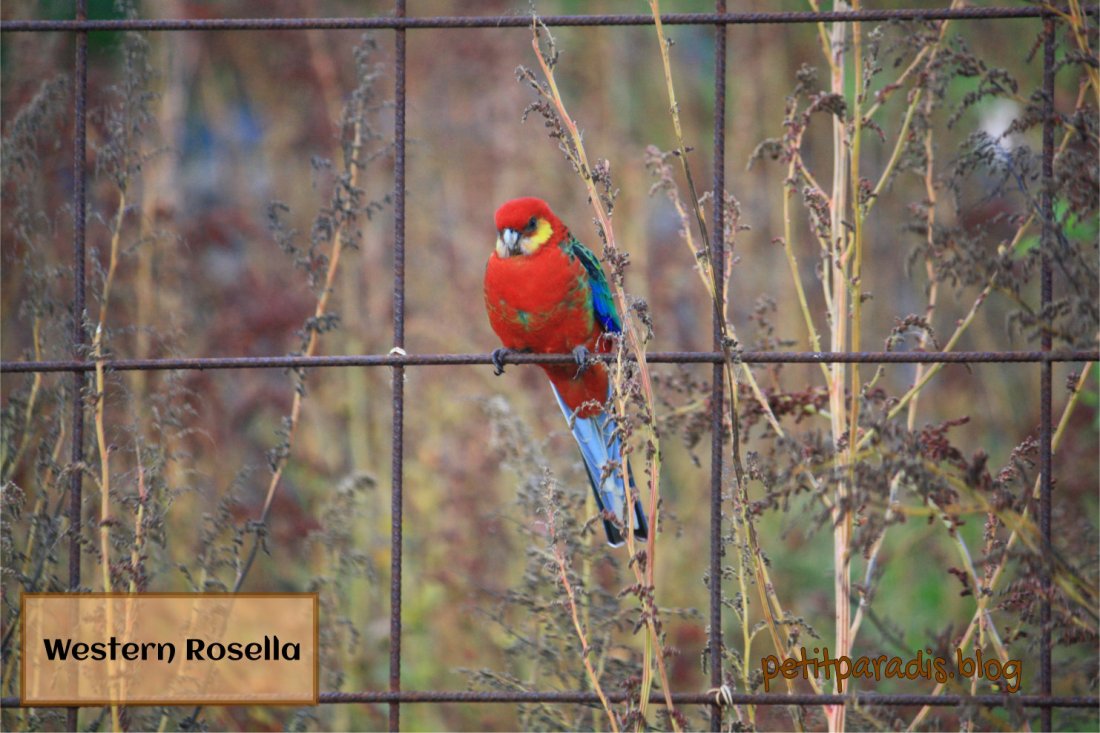
To the local Nyoongar people of the area this part of the year is known as Makuru, the Season of Fertility. In such a dry place as Australia this stands to reason. Water falls and allows plants and animals to reproduce and prepare for the coming dry spell that lies beyond the wetter months.
The Sydney Wattle in the backyard is preparing to break into flower as is the Silver Wattle. The Sydney Wattle has flourished since its near fatalistic trimming in late spring when I mulched its branches. It has nicely bushed out now and is yielding some much appreciated foliage for our rabbits who nibble on the leaves and keep their teeth healthy gnawing on the sticks. As it is a declared plant we don’t let it go to seed and instead manage the tree by pruning back towards Spring. Although, at the rate that the rabbits are eating it, there may not be any branches left by Spring anyway.
The White-tailed Black Cockatoos have been flying by in small flocks of 5-8. Sometimes larger, but not so common. The Grey Currawong that presides over this side of the mountain has been somewhat vocal, but not seen.
Flycatchers have been making regular visits into the garden recently.
In the two months ahead we can anticipate wetter days and wilder storms, not to mention the cooler weather that goes with this. Still, I have maintained my cold showers and hope to continue this into the cooler months while the temperature gets lower and there is an ample supply of rain water.
I’ve also put a bit of time aside to store away potting pots and containers under the house so that they are not likely to get blown around in storms. There were several frogs taking cover in the pots and small pools of water which was good to see. With the pots removed the grass can grow more freely and we can harvest it a little easier – as the rabbits have been steadily ‘mowing’ through our grass also

The Western Rosellas have been visiting to feed on the seeding Fat Hen (Lambs Quarters) and quite happily perch on whatever available structure offers easy picking. Here it was the mesh trellis. The Female is pictured above with a dainty eating manner. The male is below, and preferred a more break and gobble approach.

There was a little more digging for the raised garden beds, a bit more dumping of sand for swales further up the block. More stashing of leaves which I have placed into containers under the house and dumped some of the mulch from the other day on top which is already heating up nicely and getting some mold occurring. This should speed up the decomposition.
The days are shorter now of course. It’s dark between 5.30 am and 6 am and pretty much the same in the evenings. To the south in Antarctica, the Emperor Penguins will be about due to lay their eggs. I often think about what is going on down there, like its another world altogether, but close. The Little Fellas and I watched a bit of The March of the Penguins tonight. I’ve been seeking out nature documentaries for them to watch. I’m done with My Little Ponies and Ninjago.
Galahs, Corellas and Wood Duck are starting to congregate in larger numbers in the park over the road. Soon they will be moving off to nest also. I saw a pair of Shelduck nearby the other day. Also a tell tale sign that the nesting season is approaching, despite the cold.
Sydney golden wattle is one of the few acacias that is not considered to be invasive here, and has some of the most impressive bloom. Acacia dealbata give acacia a bad reputation because it is SO invasive and prolific.
LikeLike
How ironic that the tables are turned!
LikeLiked by 1 person
Tables are turned? Don’t we have more invasive exotics from there than you have from here?
LikeLike
Yes, quite possibly Tony! Paul Hogan for instance . . .
LikeLiked by 1 person
Oh goodness! I don’t mean that sort of invasive exotic!
LikeLike